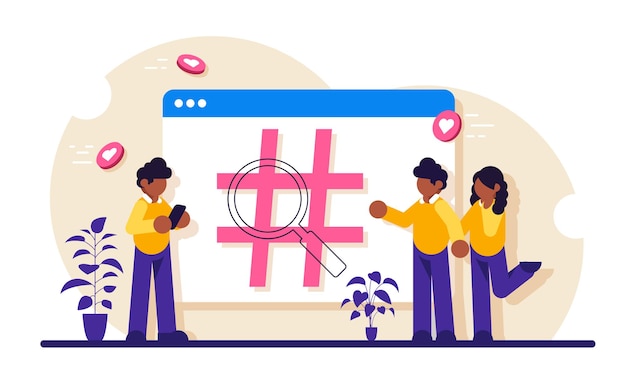Spotting Fake Online Promotions: Avoid Scams in 2025

Spotting fake online promotions in 2025 requires vigilance and knowledge of evolving scam tactics, including recognizing phishing attempts, scrutinizing website credibility, and understanding the latest methods cybercriminals use to deceive consumers.
Navigating the digital world in 2025 means encountering countless online promotions, but not all of them are legitimate. Knowing how to spot a fake promotion is crucial to avoid falling victim to scams; it’s all about asking yourself, Is This Real? Spotting Fake Online Promotions Before You Get Scammed in 2025 requires a keen eye and understanding of the latest scam tactics.
Understanding the Landscape of Online Promotions in 2025
The world of online promotions has drastically evolved, becoming more sophisticated and personalized. Understanding this landscape is the first step in protecting yourself from potential scams. As technology advances, so do the methods used by scammers, making it essential to stay informed and vigilant.
The Evolution of Online Promotions
Online promotions have moved beyond simple banner ads and email blasts. Today, they incorporate targeted advertising, social media campaigns, and personalized recommendations based on your browsing history and online behavior. This level of personalization can make fake promotions appear incredibly authentic and hard to distinguish from legitimate offers.
Common Types of Promotions
Familiarize yourself with the different types of promotions you’re likely to encounter. These include:
- Limited-Time Offers: Promotions that create a sense of urgency, pressuring you to act quickly.
- Sweepstakes and Contests: Opportunities to win prizes, often requiring you to provide personal information.
- Discount Codes: Special codes offering discounts on products or services.
- Loyalty Programs: Rewards programs that offer exclusive benefits to members.

Understanding these formats will help you critically assess the promotions you see and identify potential red flags. Remember, if something seems too good to be true, it probably is. Always verify the source and legitimacy of the promotion before engaging with it.
In conclusion, the online promotion landscape in 2025 is complex and ever-changing. Staying informed about the different types of promotions and how they’re delivered is crucial for spotting fake ones. Being aware and cautious can help you avoid scams and protect your personal information.
Red Flags: Key Indicators of Fake Promotions
Identifying red flags is essential in distinguishing between legitimate and fake online promotions. Recognizing these warning signs can prevent you from falling victim to scams and protecting your personal and financial information. It pays to be skeptical and scrutinize every promotion you encounter.
Unrealistic Offers
One of the most common red flags is an offer that seems too good to be true. This could be anything from ridiculously low prices to promises of winning a high-value prize without any effort. Scammers often use these tactics to lure unsuspecting individuals into their schemes.
Poor Grammar and Spelling
Pay close attention to the quality of the content in the promotion. Legitimate companies usually have professional copywriters who ensure that their marketing materials are free of grammatical errors and typos. If you notice numerous mistakes, it’s a strong indication that the promotion is fake.
Suspicious URLs and Domain Names
Examine the URL of the website promoting the offer. Scammers often use domain names that are similar to those of well-known brands, with slight variations or misspellings. Also be wary of URLs that use odd extensions or redirect you to unfamiliar websites.
Here are some further things you should be aware of:
- Requests for Personal Information: Be cautious of promotions that ask for sensitive information upfront, such as your social security number, bank account details, or credit card numbers.
- Lack of Contact Information: A legitimate promotion should provide clear and accessible contact information for the company offering the promotion. If there’s no way to get in touch with the company, it’s a red flag.
- High-Pressure Tactics: Scammers often use high-pressure tactics to rush you into making a decision, such as claiming that the offer is only available for a limited time or that there’s a limited quantity of the product.
In summary, recognizing red flags is a crucial skill in spotting fake online promotions. By being aware of unrealistic offers, poor grammar, suspicious URLs, and other warning signs, you can protect yourself from scams and avoid falling victim to fraudulent schemes.
Scam Tactics Evolving in 2025
As technology advances, so do the tactics used by scammers. Staying updated on these evolving methods is crucial in protecting yourself from fake online promotions. Understanding how scams are changing will help you recognize and avoid them.
AI-Powered Scams
Artificial intelligence (AI) is increasingly being used by scammers to create more sophisticated and convincing fake promotions. AI can generate personalized messages, realistic-looking websites, and even deepfake videos to deceive individuals. Be wary of promotions that seem overly tailored to your interests or use technology that appears too advanced.
Social Media Scams
Social media platforms are fertile ground for scammers, who use fake profiles and advertisements to promote fraudulent offers. These scams often involve fake giveaways, contests, or promotions that require you to share personal information or click on suspicious links. Always verify the authenticity of social media promotions before engaging with them.
Phishing Techniques
Phishing remains a popular method for scammers to steal your personal and financial information. Phishing emails, messages, or websites often mimic legitimate communications from reputable companies or organizations. Be cautious of any communication that asks you to provide sensitive information, such as your password, credit card number, or social security number.
Here are several other scam tactics scammers may use/implement:
- QR Code Scams: Be cautious of scanning QR codes from unknown sources, as they could lead to malicious websites or download malware onto your device.
- Subscription Traps: Some promotions lure you in with a “free trial” but then automatically enroll you in a costly subscription. Always read the fine print and be aware of the terms and conditions before signing up for anything.
- Fake Apps: Scammers create fake apps that mimic legitimate ones, often promoting fraudulent offers or stealing your personal information. Always download apps from official app stores and check the developer’s reputation before installing them.

In conclusion, the tactics used by scammers are constantly evolving, especially with the integration of AI and the prevalence of social media. Staying informed about these new methods and being vigilant in your online behavior can help you avoid falling victim to fraudulent promotions. Awareness and caution are your best defenses.
Protecting Yourself: Best Practices for 2025
Protecting yourself from fake online promotions in 2025 requires adopting proactive measures and best practices. These strategies can help you navigate the digital landscape safely and avoid falling victim to scams. Implement these tips to enhance your online security.
Verify the Source
Always verify the legitimacy of the promotion by checking the source. Look for contact information and verify that the website or social media profile belongs to a reputable company or organization. Use search engines to research the company’s reputation and read reviews from other customers.
Use Strong, Unique Passwords
Protect your online accounts by using strong, unique passwords for each one. Avoid using easily guessable passwords, such as your name, birthday, or common words. Consider using a password manager to generate and store complex passwords securely.
Enable Two-Factor Authentication
Add an extra layer of security to your online accounts by enabling two-factor authentication (2FA). This requires you to provide a second form of verification, such as a code sent to your phone, in addition to your password. 2FA can prevent unauthorized access to your accounts, even if your password is compromised.
Here are several more methods to ensure your online safety:
- Keep Your Software Updated: Regularly update your operating system, web browser, and antivirus software to protect against the latest security threats.
- Be Careful What You Click: Avoid clicking on links or opening attachments from unknown sources. These could lead to malicious websites or download malware onto your device.
- Educate Yourself: Stay informed about the latest scam tactics and online security best practices. Follow reputable cybersecurity blogs, news outlets, and social media accounts to stay updated.
By implementing these best practices, you can significantly reduce your risk of falling victim to fake online promotions and scams. Staying vigilant, informed, and proactive will help you navigate the digital world safely and protect your personal and financial information.
In summary, protecting yourself from fake online promotions involves a combination of vigilance, skepticism, and proactive measures. By verifying the source, using strong passwords, enabling two-factor authentication, and staying informed, you can significantly reduce your risk of falling victim to scams.
Tools and Resources for Identifying Scams
Leveraging the right tools and resources can greatly enhance your ability to identify and avoid fake online promotions. These resources can provide valuable information, help you verify the legitimacy of offers, and report scams when you encounter them.
Reverse Image Search
Use reverse image search tools to check the authenticity of images used in promotions. If the same image appears on multiple websites with different promotions, it could be a sign that the promotion is fake.
WHOIS Lookup
Perform a WHOIS lookup to find out who owns a particular domain name. This can help you verify the legitimacy of a website and identify potential red flags, such as a recently registered domain or one registered with false information.
Scam Reporting Websites
Report scams to relevant authorities and scam reporting websites to help protect others from falling victim. These websites include:
- Federal Trade Commission (FTC): The FTC’s website allows you to report scams and fraud and provides valuable information on how to protect yourself.
- Better Business Bureau (BBB): The BBB’s website allows you to file complaints against companies and provides information on their trustworthiness.
- Internet Crime Complaint Center (IC3): The IC3 is a partnership between the FBI and the National White Collar Crime Center, where you can report internet-related crimes.
Other helpful resources include:
- Antivirus Software: Install reputable antivirus software on your devices to protect against malware and other security threats.
- Web Browser Security Features: Take advantage of the built-in security features of your web browser, such as phishing and malware protection mechanisms.
- Cybersecurity Blogs and News Outlets: Follow reputable cybersecurity blogs and news outlets to stay informed about the latest scam tactics and online security best practices.
By using these tools and resources, you can significantly improve your ability to identify and avoid fake online promotions. Leveraging these resources can provide valuable information, help you verify the legitimacy of offers, and report scams when you encounter them, contributing to a safer online experience.
Future Trends in Online Scams
Looking ahead, understanding future trends in online scams is critical for anticipating and mitigating potential threats. As technology evolves, so will the sophistication and complexity of scam tactics. Staying informed about these emerging trends is essential for protecting yourself in the digital world.
Deepfake Technology
Deepfake technology, which uses AI to create realistic-looking but entirely fabricated videos and audio recordings, is expected to play a significant role in future scams. Scammers may use deepfakes to impersonate company executives, celebrities, or government officials to promote fraudulent offers or steal personal information.
Cryptocurrency Scams
As cryptocurrency continues to gain popularity, scams involving digital currencies are likely to become more prevalent. These scams may involve fake investment opportunities, Ponzi schemes, or phishing attacks targeting cryptocurrency wallets. Be wary of any promotion that promises guaranteed returns or requires you to invest in unfamiliar cryptocurrencies.
Metaverse Scams
With the rise of the metaverse, new scam opportunities are emerging in virtual worlds and digital spaces. These scams may involve fake virtual real estate deals, fraudulent NFT promotions, or phishing attacks targeting metaverse users. Stay cautious when interacting with others in the metaverse and avoid sharing personal information or engaging in financial transactions with untrusted parties.
Things to be aware of in the future:
- Quantum Computing Attacks: As quantum computing technology advances, it could potentially be used to break encryption algorithms and steal sensitive data. Stay updated on the latest developments in quantum-resistant cryptography and take steps to protect your data accordingly.
- IoT Device Hacking: The increasing number of Internet of Things (IoT) devices, such as smart home appliances and wearable devices, creates new opportunities for hackers to gain access to your personal information. Secure your IoT devices by changing default passwords, enabling security features, and keeping the firmware updated.
- Supply Chain Attacks: Supply chain attacks, in which hackers target vulnerabilities in third-party software or services to gain access to their customers’ systems, are likely to become more common. Vet your vendors carefully and implement robust security measures to protect your supply chain.
Staying informed, vigilant, and proactive will be key to navigating the evolving landscape of online scams. By anticipating these trends and taking steps to protect yourself, you can minimize your risk of falling victim to fraudulent schemes and maintain a safe online experience.
| Key Aspect | Brief Description |
|---|---|
| 🚨 Red Flags | Unrealistic offers, poor grammar, and suspicious URLs are major warning signs. |
| 🛡️ Protection | Verify sources, use strong passwords, and enable two-factor authentication. |
| 🤖 Evolving Threats | AI-powered scams, social media scams, and phishing techniques are becoming more sophisticated. |
| 🌐 Future Scams | Watch for deepfakes, cryptocurrency scams, and metaverse-related fraud. |
Frequently Asked Questions (FAQ)
▼
Check for red flags such as unrealistic offers, poor grammar, and suspicious URLs. Verify the source by researching the company’s reputation and contact information.
▼
Do not engage with the promotion. Report it to the FTC, BBB, or IC3, and block the sender if it’s an email or message. Alert others to prevent them from being scammed.
▼
Use strong, unique passwords for each online account. Enable two-factor authentication whenever possible. Be cautious what you click and share online, and keep your software updated.
▼
Be aware of AI-powered scams, deepfakes, cryptocurrency scams, and metaverse-related fraud. Stay updated on the latest cybersecurity threats and best practices.
▼
Follow reputable cybersecurity blogs, news outlets, and social media accounts to stay informed. Consult the FTC, BBB, and IC3 websites for resources and scam reporting tools.
Conclusion
As we move further into 2025, the importance of staying vigilant against fake online promotions cannot be overstated. By understanding the evolving tactics of scammers, implementing proactive protection measures, and utilizing available tools and resources, you can safeguard yourself and your personal information. Remember, staying informed and skeptical is your best defense in the ever-changing digital landscape.
